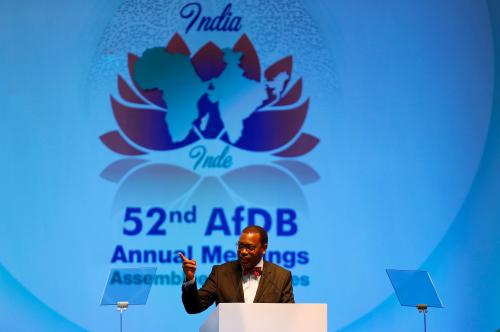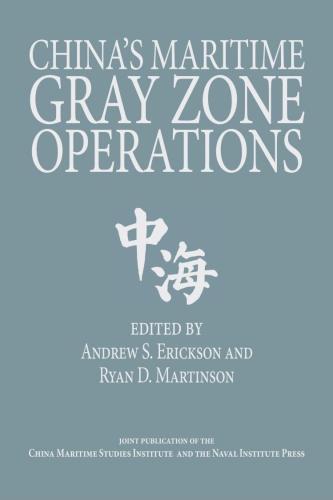Governments from around the world have just concluded negotiations to replenish two of the major multilateral funds devoted to development cooperation for the world’s poorest countries—the African Development Fund (ADF 14) and the International Development Association (IDA 18).
The ADF 14 replenishment was for $7.06 billion over three years, down slightly from the level of $7.3 billion made available for ADF 13. On the other hand, IDA 18 will have spending authority of $75 billion for the next three years, up from $52 billion in IDA 17. Although the headline increases look impressive, the reality appears to be that results are mixed from the point of view of poor countries.
While many donor countries matched their past efforts, at least in nominal local currency terms, this is not true across the board. Some donors have cut back sharply, especially for the African Development Fund replenishment. Although country details are not publicly reported, it seems that a few countries, largely in Europe and among oil exporters, who are facing serious domestic budget deficits, cut their contributions very significantly, underlining the dependence of these replenishments on the fundamental health of the global economy.
Almost no donors have contributed more (in U.S. dollar terms) than in the last replenishments. In aggregate, donor contributions have fallen despite the fact that some donors, like China, have sharply increased their contribution to IDA.
These are the first major replenishments since agreement was reached on the sustainable development goals (SDGs). The battle, partially successful, was to try and at least maintain nominal assistance levels in national currency terms, recognizing that the depreciation of many national currencies against the U.S. dollar would result in lower dollar amounts. The fact that even this low level of ambition could not be reached in the face of the far higher aspirations and needs of the SDGs seems a slightly hollow victory. On the other hand, given the draconian cuts made by some donors, the ability of others to maintain their contributions despite domestic financial difficulties should be seen in a positive light.
The takeaway is that foreign aid contributions from rich donors, at best, are set for a period of stagnation, with some countries withdrawing from foreign assistance and almost none increasing levels or taking a leadership role. This is consistent with the forward-looking survey of donor aid prospects undertaken by the Development Assistance Committee of the Organization of Economic Cooperation and Development. That survey also suggests donor plans are for stable aid allocations through 2019.
How then did IDA manage to increase its commitment authority so much? The simple answer is that IDA has been allowed to borrow from private capital markets. With some $136 billion in credits outstanding at the end of FY2016, IDA enjoys a steady stream of repayments that can be used to service debt. It intends to borrow over $20 billion to increase the commitments it makes over the next three years—essentially a bet that big investments now will pay off for the world’s poorest countries. And IDA has large reflows coming due on past credits, unlike the ADF where repayments are also down.
The innovation of allowing IDA to borrow from private markets has saved the day for poor countries. From a donor point of view, this has no charge against their budgets. From a recipient point of view, poor countries will be able to get access to funds at AAA terms (on the margin), intermediated through IDA, a massive improvement over current terms where many countries are paying double-digit interest rates if they can access private capital markets at all.
The tragedy is that it has taken a financial crisis to force this innovation. It could have been done much earlier. By November 2008, U.S. 10-year treasury bonds were already yielding less than 3 percent. Today, 10-year bonds are yielding around 2.6 percent, and the trajectory of interest rates seems to be upward. And borrowing $20 billion, secured against assets of $136 billion, is still very conservative. Multilateral development bank assets can, and should, be leveraged far more. Like many things requiring intergovernmental agreement, it may prove too little, too late.
Aside from volumes, the replenishments show significant changes in the way resources will be allocated—and these changes appear to be for the good. Both IDA 18 and ADF 14 recognize that more impact is possible if public funds are blended with private funds to increase investments. They provide new mechanisms for doing this. Both also call for more investment in resilience, another long-standing area of efficiency improvement. Economic studies have long shown that a dollar invested in prevention can result in multiple dollars (even 10 or more) saved in post-crisis assistance, but it has been politically easier for donors to react to crises than to anticipate them. More money should flow to manage fragile, conflict, and violent situations, including to build stronger institutions, for example for tax mobilization. And of course climate change is a strong new focus.
Traditional sectors and themes—health, education, training, governance, gender equality, and infrastructure to generate growth and jobs—can now be scaled up. In the case of IDA, India’s graduation means more money is available for others.
Yet there are two undercurrents to the negotiation results that bear watching.
First, the historical pattern of burden-sharing, the cornerstone of the multilateral system in the past, seems to have broken down, replaced by a system where donors decide how much they want to give to each institution on the basis of national interest rather than a multilateral agreement. Coupled with the short time frame of each replenishment (three years is not long to identify and bring new projects up for approval), this leads to a level of unpredictability that is unsettling and damaging to the institutions and their clients alike. This is not a matter of the relative burden-sharing between advanced economies and the fast-growing emerging economies like China, but a matter of changes in burden-sharing among advanced economies themselves.
Second, it is disappointing to see the different outcomes between the ADF replenishments and those of IDA. Some will surely claim this is a reflection of IDA’s superior performance but others would have argued that Africa is the area of the world where the case for using public funds to help development is strongest. Maybe the outcome also reflects the underlying governance structure in the two institutions—who controls the money. Part I countries (developed countries) have only about 40 percent of the voting share of the ADF and the African Development Bank president is currently from Nigeria, selected through a competitive process. In IDA, Part I countries have 54 percent of the vote. More broadly, “voice reform” at the World Bank Group has been moving slowly, and there is an informal understanding that the president should always be from the United States.
So while we should applaud the accomplishments of the bureaucrats and diplomats who have successfully crafted these replenishments, with imagination and innovation in a very difficult environment, we should also be cautious about individual donor commitment to a multilateral process of burden-sharing, a process that has until now successively yielded ever-higher replenishments, and careful about voice reform and the willingness of donors to trust developing countries to determine their own priorities for development.










Commentary
Mixed holiday tidings for the world’s poorest countries
December 16, 2016